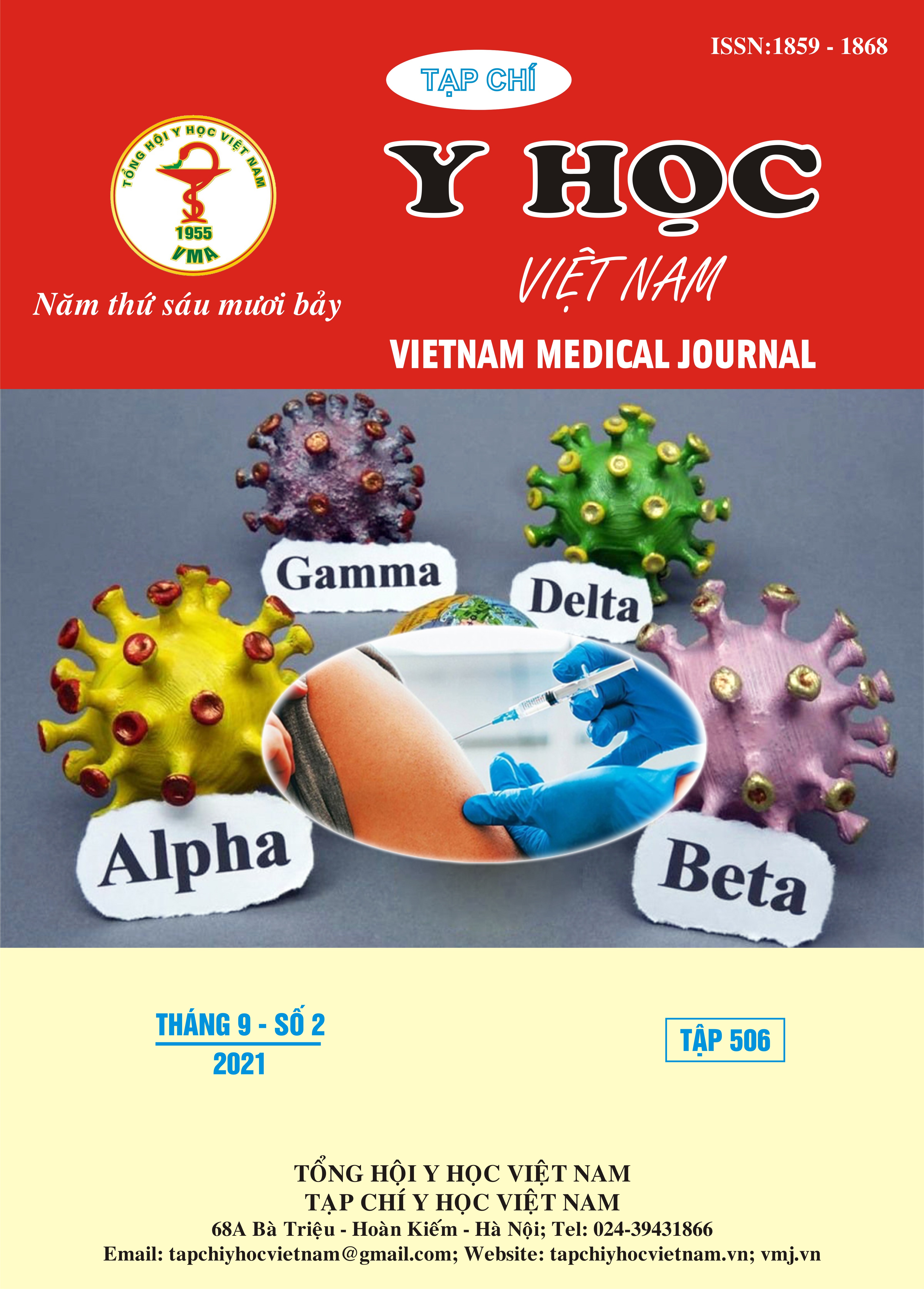NGHIÊN CỨU KẾT QUẢ ĐIỀU TRỊ XƠ GAN MẤT BÙ DO VIÊM GAN VIRUS B BẰNG PHƯƠNG PHÁP GHÉP TẾ BÀO GỐC TUỶ XƯƠNG
Nội dung chính của bài viết
Tóm tắt
Mục tiêu: Đánh giá kết quả của ghép tế bào gốc tủy xương tự thân để điều trị xơ gan mất bù do viêm gan B. Đối tượng và phương pháp: 29 bệnh nhân xơ gan mất bù do virus viêm gan B được điều trị ghép tế bào gốc tủy xương, từ tháng 6 năm 2016 đến tháng 8 năm 2019 và điều trị phác đồ chung cho bệnh nhân xơ gan. Thu thập 300ml dịch tủy xương, sau đó lọc khối tế bào đơn nhân, truyền vào qua qua động mạch gan. Các bệnh nhân được theo dõi trong 12 tháng và đánh giá kết quả dựa trên xét nghiệm cận lâm sàng và thang điểm Child- Pugh, MELD tại thời điểm 6 và 12 tháng. Kết quả: Nồng độ albumin máu có sự cải thiện có ý nghĩa thống kê ở tất cả các thời điểm 6, 12 tháng. Điểm Child giảm có ý nghĩa thống kê với p < 0,05; điểm MELD giảm, tuy nhiên sự khác biệt không có ý nghĩa thống kê, với p > 0,05. Sự khác biệt về tỷ lệ phân loại Child- Pugh ở thời điểm 6 tháng có ý nghĩa thống kê so với ban đầu, với p < 0,05. Kết luận: ghép tế bào gốc ở bệnh nhân xơ gan bước đầu cải thiện chức năng gan, điểm Child- Pugh.
Chi tiết bài viết
Từ khóa
xơ gan, ghép tế bào gốc, tuỷ xương, viêm gan virus B
Tài liệu tham khảo
2. Blachier, M., et al., The burden of liver disease in Europe: a review of available epidemiological data. Journal of hepatology, 2013. 58(3): p. 593-608.
3. Hoyert, D.L. and J. Xu, Deaths: preliminary data for 2011. National vital statistics reports : from the Centers for Disease Control and Prevention, National Center for Health Statistics, National Vital Statistics System, 2012. 61(6): p. 1-51.
4. Gordon, M.Y., et al., Characterization and clinical application of human CD34+ stem/progenitor cell populations mobilized into the blood by granulocyte colony-stimulating factor. Stem Cells, 2006. 24(7): p. 1822-30.
5. Terai, S., et al., Improved liver function in patients with liver cirrhosis after autologous bone marrow cell infusion therapy. Stem Cells, 2006. 24(10): p. 2292-8.
6. Fattovich, G., F. Bortolotti, and F. Donato, Natural history of chronic hepatitis B: special emphasis on disease progression and prognostic factors. Journal of hepatology, 2008. 48(2): p. 335-352.
7. Kim, J.K., et al., Autologous bone marrow infusion activates the progenitor cell compartment in patients with advanced liver cirrhosis. Cell Transplant, 2010. 19(10): p. 1237-46.
8. Saito, T., et al., Potential therapeutic application of intravenous autologous bone marrow infusion in patients with alcoholic liver cirrhosis. Stem Cells Dev, 2011. 20(9): p. 1503-10.
9. Mohamadnejad, M., et al., Phase 1 trial of autologous bone marrow mesenchymal stem cell transplantation in patients with decompensated liver cirrhosis. Arch Iran Med, 2007. 10(4): p. 459-66.


